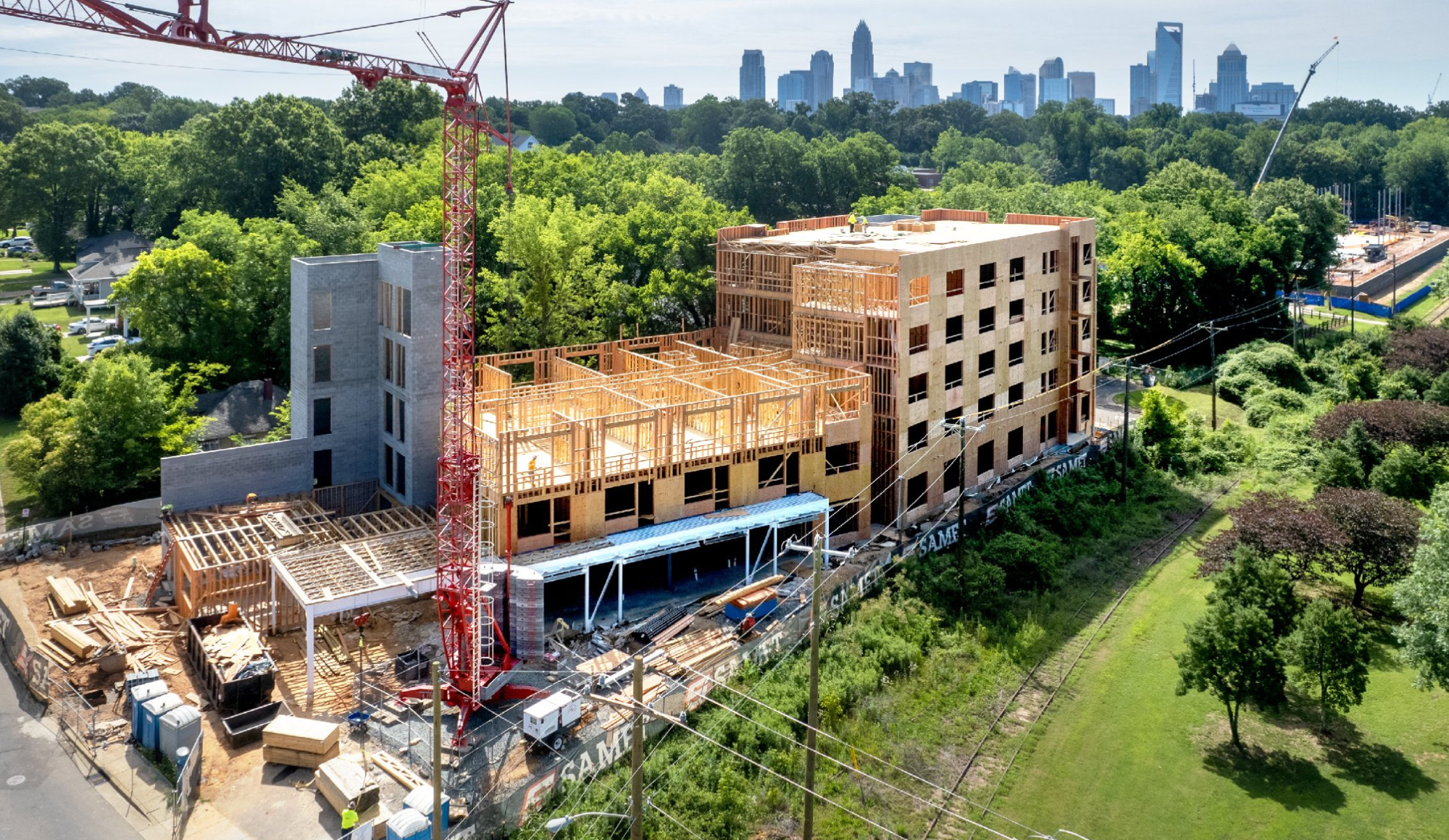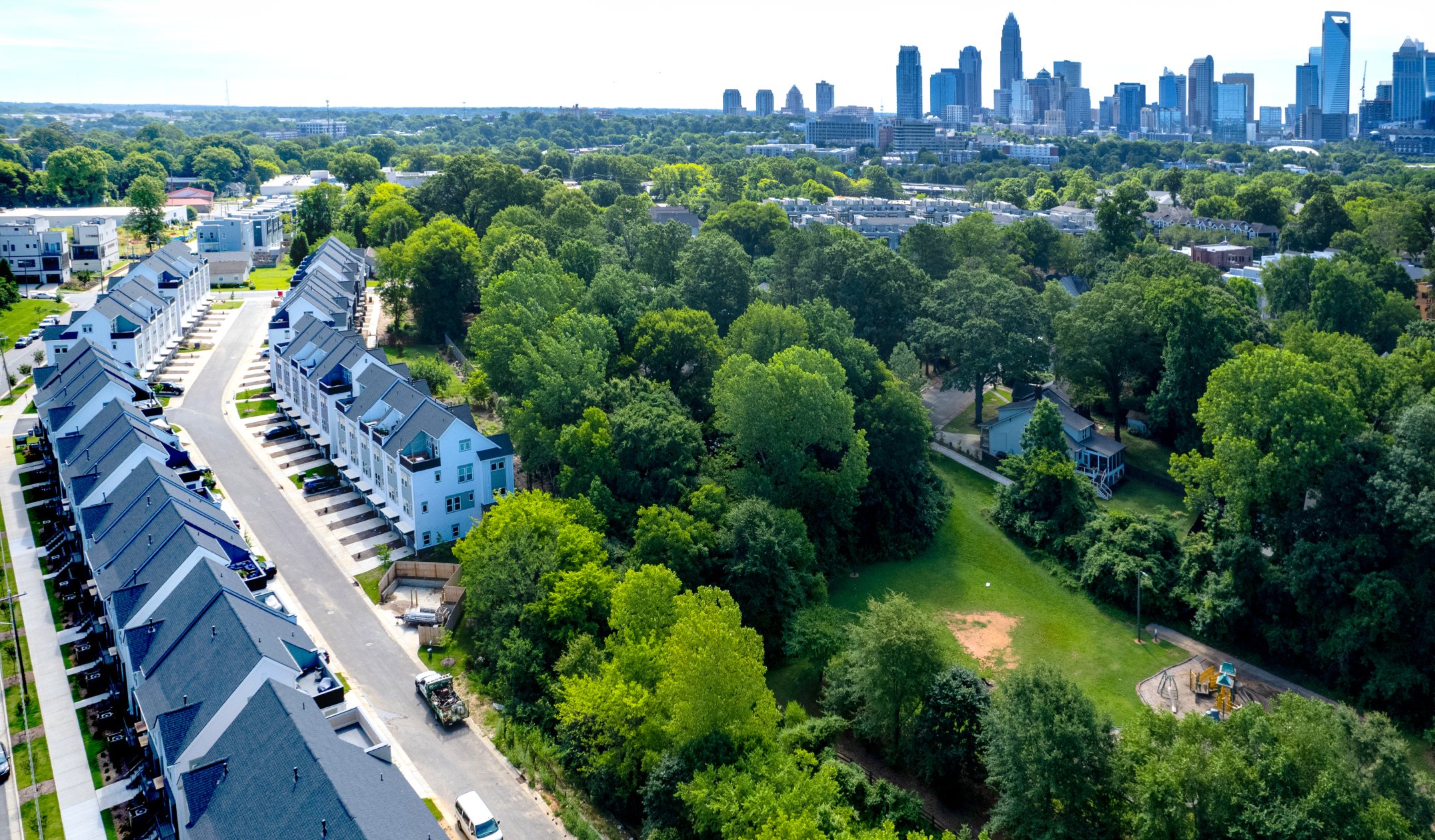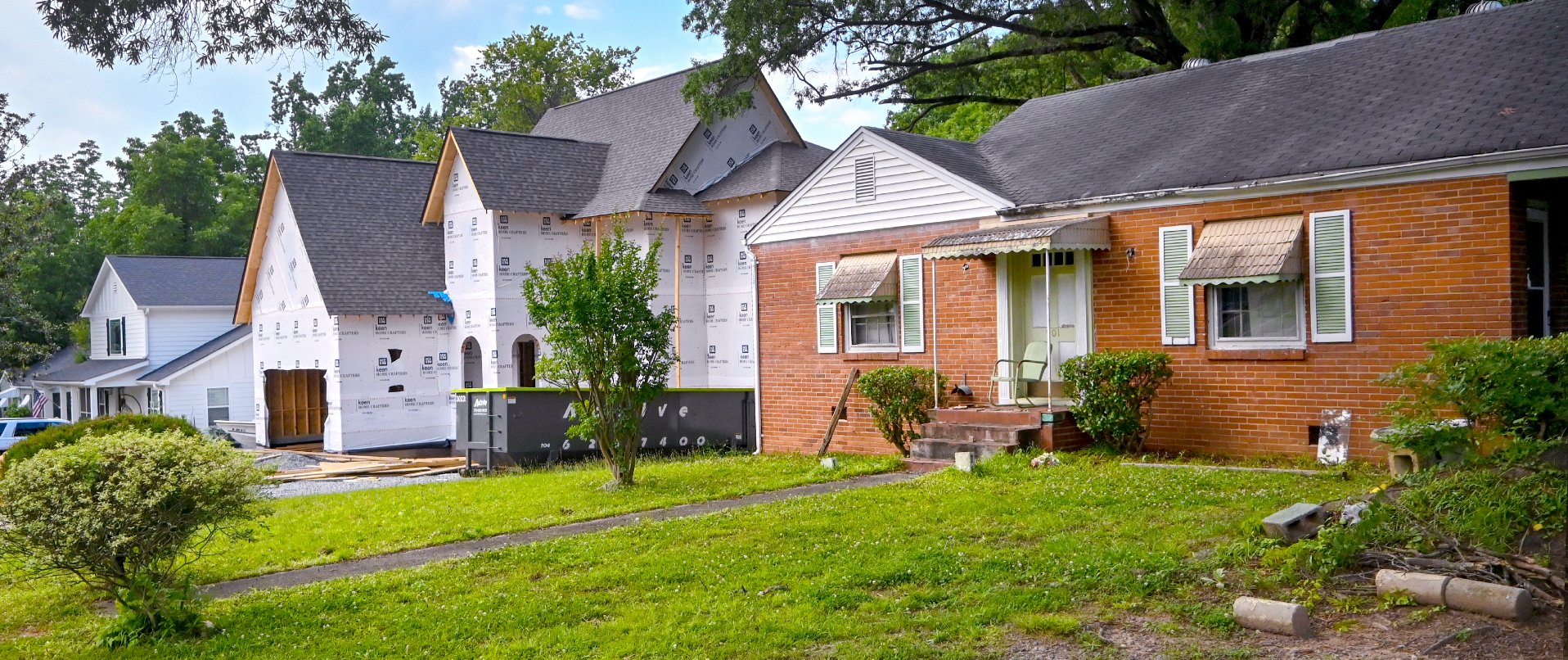
Understanding the Affordable Housing Crisis in Charlotte
By Kathryn Firmin-Sellers, President and CEO
Mecklenburg County is grappling with an affordable housing crisis, but we are not alone. The affordable housing crisis is a nationwide issue that has been intensifying over the years, locally affecting a substantial portion of the community and prompting collaborative efforts, such as A Home For All, to create lasting solutions.
To understand the current housing situation, you must first understand the history of broken policies and insufficient initiatives that led us here.
1820 – 1929
The majority of the nineteenth century and into the twentieth century was the Era of Urbanization, when industrialization and immigration fueled rapid growth of cities. Such growth was largely unregulated, leading to poor and unsanitary living conditions. As a result, large groups of people – mostly white – began to flee urban areas. This is when the first use of race-based zoning is introduced, then ruled illegal, leading to the introduction of use-based zoning, which often had the same impact of keeping ‘undesirable’ populations out of the housing market.
1929 – 1948
The Great Depression led to the collapse of the housing market; prices fell by 35% and around 250,000 people lost their homes due to foreclosures or eviction. The New Deal legislation, enacted by President Franklin D. Roosevelt and put into place by Federal Housing Administration and Home Owners Loan Corporation, stabilized the housing market, but introduced redlining and other exclusionary zoning, resulting in established segregation by race and income.
The New Deal also saw the introduction of public housing – but officials could not decide if public housing was for workforce development or low-income individuals, and initially it was only open to married couples with children.
The latter part of this period encompasses World War II – when resources all shifted toward production of materials for war and the construction of new homes declined 95%, which put a stop to the attempts to stabilize the housing market.
1949 – 1990
During the years of rebuilding and growth after World War II, we see a new era of rapid suburbanization, introducing exclusionary zoning and mortgage lending practices that helped restore the housing market. However, those practices largely benefited white, middle-to-upper income homeowners.
The Federal-Aid Highway Act of 1956 opened the door to a suburban sprawl, pushing many people out of their urban neighborhoods and into displaced housing in poorer sections of the area as the highways were cutting through cities.
Later on, cities began taking measures to slow that growth to protect environmental resources, which limited housing construction despite the growing population.
Public housing projects continued, but mostly consisted of very low-income individuals, so they became concentrations of poverty – which led to a concentration of drug use and crime as well. These housing projects were chronically underfunded and largely focused on compliance with federal regulations rather than maintenance of the properties.
1990 – 2008
Entering into the 21st century, we see an economic expansion and return to cities as societal trends, including a decrease in household size and growing concern with the impact of suburbanization on the environment, make city living more attractive. However, restrictive zoning limits housing.
From there, policy changes allowed for new financing instruments to be created, which led to riskier loans, speculative investments and a high demand for housing to combine and create a housing bubble. This series of events then brought the housing market’s collapse in 2008, ushering in the Great Recession.
New construction then stops, mortgage lending standards tighten and increase the demand for rentals, and a new, larger generation enters the housing market with no houses being built.
As for public housing, old public housing units were destroyed and we started to see new efforts to create mixed income developments, with subsidized and market rate units. Residents of old public housing were displaced; most permanently.
Present Day
The result of all this? Massive growth in housing underproduction, which is defined as the difference between total housing availability and total housing need.
Nationally, we are short of nearly four million units, and the problem is spreading across a growing number of housing markets, both urban and rural. If you think about basic principles of supply and demand, when we are underproducing, the demand will outpace supply and prices will rise – by a lot.
Charlotte’s problems mirror national trends. Our city is growing – between 2022 and 2023, we added 37,000 households – but we are not producing enough housing at that same rate. In the past ten years, we underproduced 11,500 units. To catch up, and plan for continued growth, we need to produce 10,600 homes per year.
So what does that mean for the people who live here? It means we all face higher housing costs, and those who are lower income can’t find anything they can afford. Since 2017, home prices have increased by 72%, which dramatically exceeds the national average of 41%. In 2023, the median home price was $445,000, which requires an individual to have $100,000 in household income to afford, and the actual median income is $80,000.
Rent in our area has increased 34%, which is on par with the national average, but we have lost 74% of affordable rental units.
We are losing Naturally Occurring Affordable Housing (NOAH) at an alarming rate due to redevelopment, rising property values, increasing construction and renovation costs, as well as corporate landlords purchasing stock. Only 8% of rentals are considered affordable today.
So, what can we do?
Through A Home For All, United Way and Mecklenburg County worked with a group called Grounded Solutions to identify a suite of policy solutions to accelerate housing production. Some of the policies are already in place within Charlotte-Mecklenburg.
If we want to accelerate affordable housing production, first, we need to make it easier to build homes by advocating for voluntary, incentive-based housing policies and creating a strike fund to support NOAH preservation. Next, we need to enable more types of homes, such as accessory dwelling units (ADUs), which are secondary homes on the same lot as a primary residence and single room occupancy housing (SROs), a type of low-cost housing that consists of small, furnished rooms for rent. These housing types would require some zoning changes and allow for reduced lot sizes, which would encourage greater density and enable more homes in more places.
Lastly, we need to move towards reducing rent barriers – there need to be better policies in place to prevent evictions, provide access to expungement and introduce a cap on rental application fees.
These are critical steps, but they are not enough on their own. Charlotte has long faced challenges in providing enough affordable housing. Historically, broken policies and initiatives have contributed to the shortage we see today. But pointing fingers at the past will not build homes for the future. Now is the time to act with urgency and purpose.
The solution to Mecklenburg County’s affordable housing crisis isn’t just about policy – it’s about people. It requires all of us to step up and advocate for change, engage in important community conversations, support local organizations and encourage our public and private sectors working together to invest in long-term solutions.
The affordable housing crisis is growing as Mecklenburg County is growing, but we have an opportunity to act and ensure that everyone has the opportunity to live in and grow with the city, not get left behind.
This post was heavily informed by research conducted by Up For Growth on Housing Underproduction in the U.S. Learn more about A Home For All.




